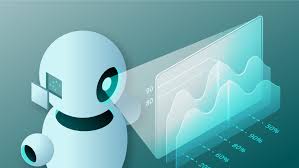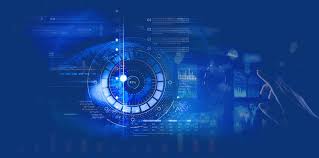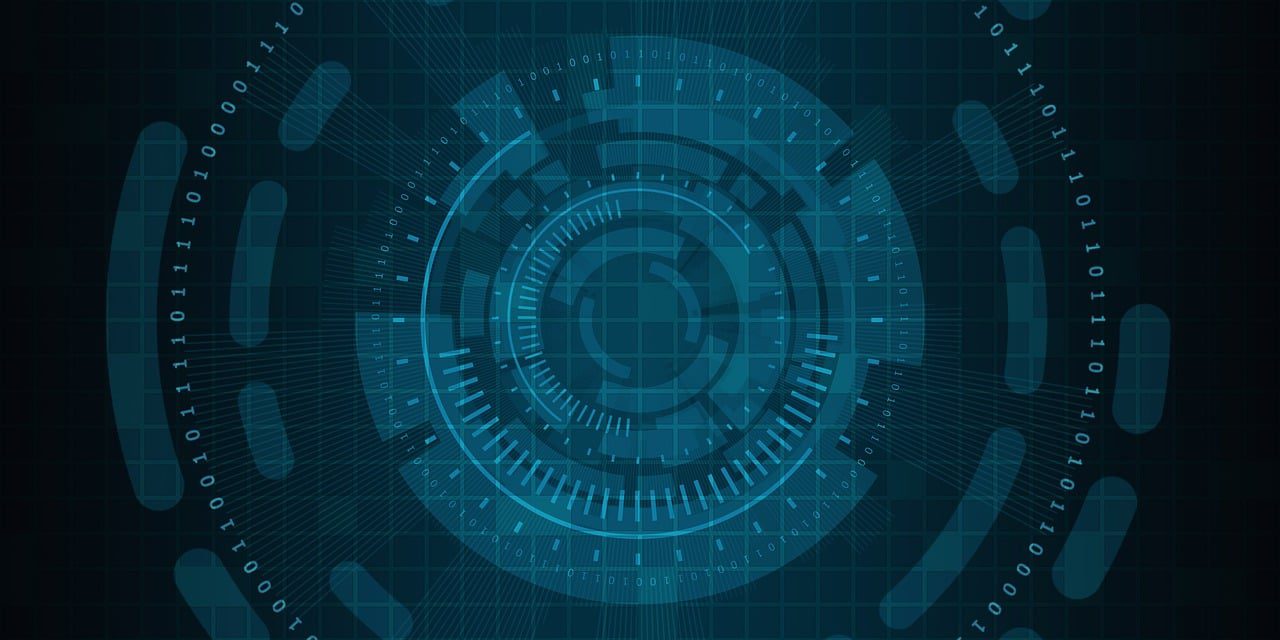Everything About Computer Vision Task That You Should Know?

Here’s how computer vision is helping modern businesses handle complicated visual challenges, from self-driving vehicles to flaw detection and medical imaging.
Let’s begin with a straightforward question: What do you see on this page?
On the left, there’s a green table of contents, on the right, my picture and datasets download button, and on the left, the wall of text you’re currently reading.
But
When it comes to machinery, things aren’t always as simple as they appear.
Enabling computers to view the world in the same manner that humans do is a difficult task that data scientists are working to solve.
Computer Vision is a field of study that focuses on enabling computers to understand and interpret visual information. This article provides an overview of the key concepts, techniques, and applications of computer vision, highlighting its significance in various industries and the transformative impact it has on tasks involving visual data analysis.
Understanding Computer Vision
Computer Vision is a multidisciplinary field that combines image processing, pattern recognition, and machine learning to enable machines to understand and analyze visual data. It involves extracting meaningful information from images or videos, such as object recognition, scene understanding, image classification, and image segmentation. Computer vision algorithms aim to replicate human visual perception and enable machines to interpret and make sense of visual data.
Key Techniques and Algorithms
Computer Vision employs various techniques and algorithms to analyze and interpret visual information. These include image preprocessing, feature extraction, object detection, image classification, and image segmentation. Machine learning algorithms, such as deep learning and convolutional neural networks (CNNs), play a vital role in training models to recognize patterns and make accurate predictions. Other techniques like optical character recognition (OCR), pose estimation, and facial recognition are also widely used in computer vision applications.
Applications of Computer Vision
Computer Vision finds applications across diverse industries. In healthcare, it aids in medical imaging analysis, disease detection, and surgical assistance. In autonomous vehicles, computer vision enables object detection, lane detection, and pedestrian recognition for safe navigation. Retail uses computer vision for inventory management, shelf monitoring, and cashier-less checkout systems. Security and surveillance systems employ computer vision for facial recognition, anomaly detection, and behavior analysis. Additionally, computer vision plays a crucial role in augmented reality (AR), virtual reality (VR), robotics, agriculture, and quality control in manufacturing.
Emerging Trends and Challenges
Advancements in computer vision continue to evolve rapidly. Deep learning techniques, coupled with the availability of large annotated datasets, have significantly improved the accuracy and performance of computer vision models. Challenges in computer vision include handling occlusions, variations in lighting and viewpoint, and ethical considerations surrounding privacy and bias in algorithms. Addressing these challenges and exploring emerging areas like explainable AI and domain-specific applications will shape the future of computer vision.
Computer Vision is a transformative field that enables machines to perceive and interpret visual information. With its wide-ranging applications across industries, computer vision revolutionizes tasks involving visual data analysis. As technology advances, computer vision will continue to play a vital role in driving innovations and transforming industries with its ability to analyze and understand the world through visual input.
There is, however, some good news
The area of computer visionhas been quickly evolving, with real-world applications and even the ability to outperform humans in some visual tasks. All of this is possible owing to recent advancements in AI and deep learning.
In a world filled with challenges and uncertainties, it’s important to remember that there is still good news to be found. This article highlights some positive developments, inspiring stories, and promising trends that bring hope and optimism amidst the difficulties we face.
Advances in Science and Technology
Despite the challenges we encounter, there are remarkable advancements in science and technology that offer hope for a better future. Breakthroughs in medical research, renewable energy, space exploration, and artificial intelligence are paving the way for innovative solutions and improving lives worldwide.
Humanitarian and Environmental Efforts
Amidst global crises, there are incredible humanitarian efforts and environmental initiatives making a positive impact. Organizations and individuals are dedicating themselves to causes such as poverty alleviation, disaster relief, education, and conservation. Their actions demonstrate the capacity for compassion and the potential to create lasting change.
Social and Cultural Progress
Society continues to make progress towards equality, justice, and inclusivity. Movements advocating for human rights, gender equality, LGBTQ+ rights, and racial justice are gaining momentum. Cultural expressions, such as art, music, literature, and film, promote understanding, empathy, and appreciation for diverse perspectives.
Acts of Kindness and Resilience
Amidst adversity, countless acts of kindness and resilience emerge. Individuals and communities come together to support one another during times of crisis, demonstrating the inherent strength of the human spirit. Stories of ordinary people going above and beyond to help their neighbors, strangers, or even global causes inspire hope and restore faith in humanity.
While challenges persist, it’s essential to focus on the good news that brings hope and positivity to our lives. Advances in science and technology, humanitarian efforts, social progress, and acts of kindness all remind us of the resilience and potential for positive change. By acknowledging and celebrating these positive developments, we can inspire others and work towards a brighter future.

What is the definition of computer vision tasks?
Humans train computers to perceive and understand the world around them in computer vision, a branch of Deep Learning and Artificial Intelligence.
While humans and animals easily solve vision problems from an early age, assisting robots in interpreting and perceiving their surroundings through vision is still mostly unresolved.
Machine Vision is complicated at its heart because of the limited perception of human vision combined with the infinitely shifting scenery of our dynamic environment.
Computer vision tasks refer to a wide range of activities and processes aimed at enabling machines to understand and interpret visual information. This article provides a comprehensive definition of computer vision tasks, delving into various subfields, techniques, and real-world applications that leverage computer vision to analyze and extract insights from visual data.
Defining Computer Vision Tasks (150 words):
Computer vision tasks encompass a set of techniques and algorithms that enable computers to perceive, analyze, and understand visual information. These tasks involve extracting features, recognizing patterns, and interpreting images or videos. Common computer vision tasks include image classification, object detection, image segmentation, image generation, scene understanding, and optical character recognition (OCR). Each task serves a specific purpose in extracting meaningful information from visual data.
Subfields of Computer Vision
Computer vision encompasses various subfields, each focusing on specific aspects of visual analysis. These subfields include image processing, which involves manipulating and enhancing images to extract useful information. Pattern recognition aims to identify and classify objects or patterns in images. Machine learning techniques, such as deep learning and convolutional neural networks (CNNs), play a crucial role in training models to perform computer vision tasks effectively.
Real-World Applications
Computer vision tasks find extensive applications across numerous industries and domains. In healthcare, computer vision aids in medical imaging analysis, disease diagnosis, and surgical assistance. Autonomous vehicles rely on computer vision for object detection, pedestrian recognition, and lane detection. Retail and e-commerce benefit from computer vision in areas such as product recognition, augmented reality try-on experiences, and inventory management. Security and surveillance systems use computer vision for facial recognition, object tracking, and anomaly detection. Additionally, computer vision is used in agriculture, robotics, quality control, and cultural heritage preservation.
Advancements and Challenges
Advancements in computer vision, such as improved algorithms and increased computing power, have expanded the capabilities of computer vision tasks. However, challenges persist, including occlusion, variations in lighting and viewpoint, and the need for large and diverse training datasets. Researchers and practitioners continue to address these challenges through the development of more robust algorithms, improved data collection techniques, and advancements in hardware technology.
Computer vision tasks encompass a wide range of techniques and algorithms that enable machines to analyze and understand visual data. From image classification to object detection and scene understanding, computer vision plays a pivotal role in various applications across industries. Continued advancements in computer vision will unlock new possibilities and empower machines to interpret visual information with increased accuracy and efficiency.

A quick overview of the history of computer vision tasks?
like many great things in the realm of technology, began with a cat.
Hubel and Wiesel, two Swedish scientists, strapped a cat in a restraint harness and implanted an electrode in its visual brain. The scientists used a projector to display the cat a succession of pictures in the hopes that its brain cells in the visual cortex would fire.
When a projector slide was withdrawn from the projector, a single horizontal line of light emerged on the wall—the eureka moment. A crackling electrical noise was produced as neurons activated.
The researchers had just discovered that the early layers of the visual cortex, like the early layers of a deep neural network, respond to basic patterns like lines and curves.
This experiment represents the start of our knowledge of the relationship between and the human brain, which will help us better comprehend artificial neural networks.
tasks have evolved significantly over the years, driven by advancements in technology and the growing demand for visual understanding by machines. This article provides a concise historical overview, highlighting key milestones, breakthroughs, and the impact they have had on the field of
Early Developments
The origins of can be traced back to the 1960s and 1970s when researchers began exploring the possibilities of teaching computers to understand visual information. Early tasks focused on simple image processing techniques, such as edge detection and image segmentation. These foundational concepts laid the groundwork for further advancements in
Feature-Based Approaches
In the 1980s and 1990s, researchers shifted towards feature-based approaches, which involved extracting key features from images to identify objects or patterns. Techniques like template matching, corner detection, and scale-invariant feature transform (SIFT) were developed during this period. These methods provided the ability to recognize objects based on their distinct features, enabling advancements in tasks such as object recognition and tracking.
Rise of Machine Learning
The late 1990s and early 2000s witnessed a significant shift in with the emergence of machine learning techniques. The application of neural networks, particularly convolutional neural networks (CNNs), revolutionized tasks like image classification. The availability of large annotated datasets, such as ImageNet, fueled advancements in deep learning, allowing computers to learn complex visual representations and achieve state-of-the-art performance in various tasks.
Recent Advances and Challenges :
In recent years, has seen remarkable progress, driven by advancements in deep learning architectures, increased computational power, and the availability of massive datasets. Tasks like object detection, image segmentation, and image generation have reached unprecedented levels of accuracy and efficiency. However, challenges remain, including handling occlusions, variations in lighting and viewpoint, and the ethical considerations surrounding privacy and bias in algorithms.
The history of tasks reflects the continuous evolution and advancements in the field. From early image processing techniques to feature-based approaches and the rise of machine learning, each era has contributed to expanding the capabilities of . The future holds even more exciting possibilities as researchers and practitioners continue to push the boundaries of visual understanding by machines.
Human eyesight vs. computer vision
When the neurophysiologists described before sought to comprehend cat vision in 1959, the idea that machine vision must be derived from the animal vision was popular.
Since then, the fast growth of picture capturing and scanning devices have been matched by the invention of state-of-the-art image processing algorithms, forming milestones in the history of
The first robust Optical Character Recognition system was developed in 1974, following the advent of AI as an academic topic of study in the 1960s.
By the 2000s, machine Vision had moved its focus too far more complicated issues, such as:
- Object recognition
- Recognizing people by their faces
- Segmentation of images
- Classification of Images
- And there’s more—
Human eyesight and are two distinct ways of perceiving and interpreting visual information. This article provides a comparative analysis of human eyesight and exploring their similarities, differences, and the unique capabilities each possesses in understanding the visual world.
Human Eyesight: Biological Marvel
Human eyesight is a remarkable biological phenomenon that enables humans to perceive and interpret visual information effortlessly. Our eyes capture light, which is then processed by the brain to form images. Human eyes possess exceptional capabilities, such as color perception, depth perception, and the ability to detect subtle visual cues. Additionally, our visual system is adept at contextual understanding, recognizing patterns, and inferring meaning from visual stimuli.
: Artificial Perception
is a field of study that focuses on enabling machines to understand and interpret visual information. Unlike human eyesight, which relies on biological processes, employs algorithms, image processing techniques, and machine learning to analyze and make sense of visual data. algorithms can perform tasks such as image recognition, object detection, and image segmentation, but they lack the intuitive understanding and context that human eyesight naturally possesses.
Similarities and Differences
While both human eyesight and involve the perception and analysis of visual information, there are notable differences between the two. Human eyesight excels in adaptability, context-based understanding, and the ability to recognize and interpret complex visual scenes. On the other hand, algorithms excel in tasks that require precision, scalability, and computational efficiency. They can process vast amounts of visual data quickly and make consistent and accurate judgments based on predefined patterns and features.
Synergy and Collaboration
Rather than viewing human eyesight and as competing entities, their strengths can be harnessed through collaboration. Human input is invaluable in training and fine-tuning algorithms, providing context, and making nuanced judgments. Conversely, enhances human capabilities by analyzing large datasets, detecting patterns, and automating repetitive tasks. The synergy between human eyesight and holds immense potential for advancements in areas such as healthcare, robotics, and autonomous systems.
Human eyesight and are complementary approaches to understanding the visual world. While human eyesight possesses natural intuition and context-based understanding, algorithms excel in scalability, precision, and computational efficiency. Recognizing the strengths of each and fostering collaboration between the two can lead to groundbreaking advancements and applications in various domains.
Over the years, they’ve all gained impressive accuracy.
The ImageNet dataset, which contains millions of annotated pictures that are publicly available for research, was launched in 2010. Two years later, the AlexNet architecture was born, making it one of the most important advances in , with over 82K citations.
To read more: https://24x7offshoring.com/blog/
As part of computer vision, image processing is used.
is a subset of Digital Image Processing or Image Processing in short. It deals with using various algorithms to improve and interpret pictures.
Image Processing is more than a subset; it is the forerunner of modern-day machine vision, supervising the creation of various rule-based and optimization-based algorithms that have led to the current state of machine vision.
The task of executing a series of operations on an image based on data gathered by algorithms to evaluate and alter the contents of a picture or the image data is known as image processing.
Let’s speak about the practical aspect of now that you’ve learned about the theory.
How does computer visionwork?
Here’s a quick graphic depiction that addresses the topic at its most fundamental level.
While the three stages describing the fundamentals of appear simple, processing and interpreting a picture using machine vision is challenging. This is why:
A pixel is the smallest quanta in which an image may be split, and a picture is made up of many pixels.
Computers use an array of pixels to analyze pictures, with each pixel having a set of values that reflect the presence and intensity of the three basic colors: red, green, and blue.
A digital image is formed when all pixels are combined. As a result, the digital picture is transformed into a matrix, and is transformed into a study of matrices.
While the most basic algorithms handle these matrices using linear algebra, more complicated applications employ operations such as convolutions with learnable kernels and downsampling through pooling.
The numbers indicate the pixel values at the image’s specific coordinates, with 255 being a completely white point and 0 denoting a complete black point.
Matrix sizes are significantly greater for larger pictures.
While glancing at the image gives us a good sense of what it’s like, a glance at the pixel values reveals that the pixel matrix provides no information about the image!
To declare that this image depicts a person’s face, the computer must conduct complicated computations on these matrices and create connections with surrounding pixel components.
Developing algorithms for identifying complicated patterns in photos and may make you appreciate how sophisticated human brains must be to be so good at pattern identification.
Continue reading, just click on: https://24x7offshoring.com/blog/
data scientists: https://www.v7labs.com/blog/data-science-interview-questions-and-answers
deep learning: https://www.v7labs.com/definitions/deep-learning
deep neural network: https://www.v7labs.com/blog/neural-network-architectures-guide
optimization-based algorithms: https://www.v7labs.com/blog/train-validation-test-set

